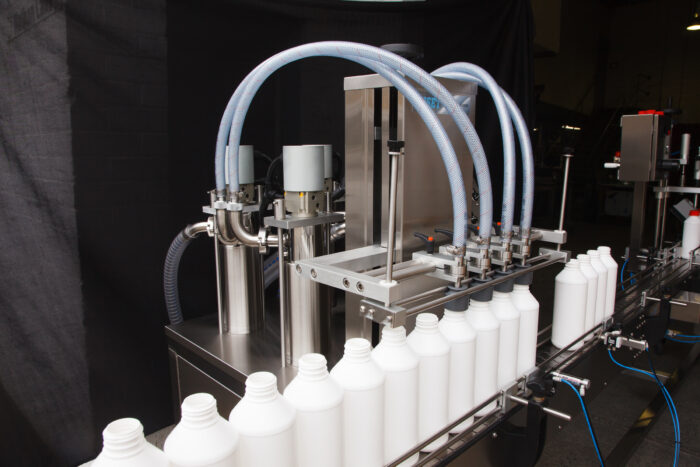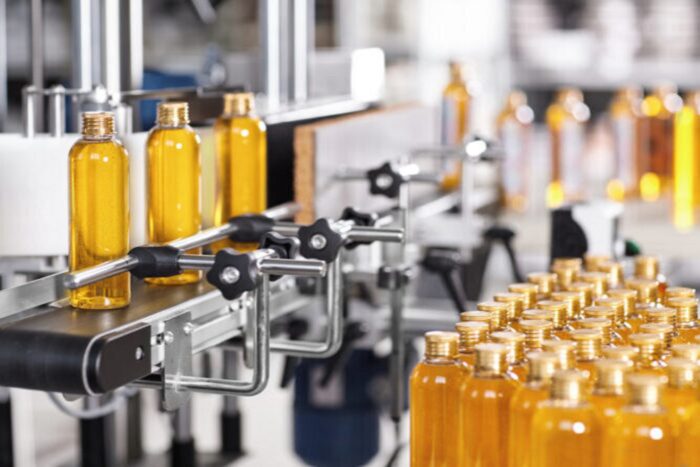There are numerous benefits to your business model when utilising the services of liquid filling machines to increase production and decrease downtime. Properly integrating these machines into your existing manufacturing line can be a challenge, especially for small-to-medium business operations, but it is a challenge that is well worth undertaking in the long term – especially if your industry is one that has seen ramped-up demands from the effects of the COVID-19 pandemic.
The benefits of using Australian-made liquid filling machines are manifold. They enable consistent output, stabilise loss on the production line and see a satisfied workforce operating seamlessly with modern technology to achieve production goals and performance output that solidifies their jobs and sees them contribute to sustainable operations. In addition, they reduce downtime from machinery malfunction or recalibration if working between differing built systems requiring alternate cleaning and sanitisation procedures.
In this article, we discuss the benefits and opportunities that investment in liquid filling machines can provide to your business operations in three key areas: cost benefits, performance optimisation and major worldwide trends post-pandemic.
Cost Benefits to Your Bottom Line
The most important factor in successfully integrating liquid filling machines into your line is comprehensive planning and design. It’s well known that disruptions to the global supply and distribution chain are impacting western markets after the effects of the pandemic – late deliveries, inability to source raw materials and backed-up production schedules are now part of the working environment. How do you reduce your costs while still looking forward to future prospects to increase your market share and ramp up your production?
Technological versatility is key. Modern liquid machinery advances using single flow production and improved packaging filling processes means costs to your business are reduced, especially in regulated or fast-moving markets. Globally, the packaging sales industry is predicted to reach $1 trillion in value soon, with flexible plastics and paperboard being packaging elements that are highly valued and cost-effective in modern filling machines. Smart manufacturing now means using data analytics and better machine performance to increase your product output while also reducing loss and wastage.
This is where using liquid filling machines in the food and beverage, pharmaceutical and health science industries can provide that competitive edge. Liquid filling machines can improve many areas of your business performance including:
- Improved output – modern machines can fill and seal 10-20 bottles per minute at the low end, to hundreds of bottles per minute at large scale. Modern designs and materials allow for a more compact design fill process while maintaining high throughputs on rotor or conveyor belt operations with a fast turnaround rate.
- Stability in workload – modern filling machines calibrate the correct amounts of product in various formulations and viscosities to be inserted into the packaging and also have automated processes for cleaning and sterilisation that reduce lost production time.
- Environmental efficiencies – working with the latest technologies now around in industrial packaging and recyclables means modern liquid filling machines are at the forefront of production output providing consistent and stabilised products.
Increasing Performance Optimisation
First, it’s important to source and work productively with the right supplier to integrate the right design process into your manufacturing line. Do you need a trial machine installation run via hire or rental agreements to see how your multi-production business or factory adjusts to an automated line? Are you an industrial manufacturer of essential service products that needs ongoing service and product support on an ongoing scale with no time for production downtime?
Second, understanding and aligning these manufacturing efficiencies will differentiate future competitors in the marketplace. For example, using computer analysis to help skilled staff like plant managers work out what equipment is best for the task at hand and at what time. Using AI and robotic tools to help predict the ongoing effects of these environmental production factors on capacity and sustainable packaging options is also an emerging field, where investing in these technologies will help secure better cost benefits and increase production output.
In medical, health science and pharmaceutical industries, aligning your equipment and plant network for efficiencies in cleaning, sterilisation and filling processes delivers the best return on your investment in filling machinery. Maximising your product integrity with improved filling processes to increase yield and deliver quality products to market with reduced turnaround times helps improve manufacturing efficiencies and the performance of your products. Liquid filling machines become essential, especially when considering your production optimisation processes.

Major Emerging Trends Post-Pandemic
There are three main areas where transitioning post-pandemic production to automated liquid filling machines will determine market share – technology changing consumer behaviour, increase in hygiene and safety procedures, and sustainable operations due to environmental awareness and reduced raw materials.
Using better packaging options on faster rotor line machines with secure filling and sealing attachments targeted to the specific application both increases the product’s output and decreases supply chain delivery timeframes off the line. This could involve automated machines that have the ability to change production rapidly, filling different product types and sizes on short notice. It could also mean changing packaging formulas to comply with reviewed regulatory or raw material requirements and maintaining standard hygiene controls.
Understanding changing consumer needs, behaviour and providing sustainable operations through technology advances will differentiate competitors in the marketplace. For example, online e-commerce sales have significantly affected product delivery times from manufacture, sale to store in the last 18 months, and sourcing packaging materials to meet this new consumer demand is under strain.
Having the ability to quickly change your product line output through using automated techniques and hardware will be your fair-weather friend for those at the forefront of manufacturing excellence in this decade.
How Asset Packaging Can Assist Your Business
Asset Packaging Machines has an extensive range of liquid filling and capping machines, along with conveyors and tables that can be easily integrated into your existing production line – helping you stay on top of production and avoiding any major disruptions to your production output. We’ll work with you to understand your business in detail before so we can deliver the right solutions for your needs.













